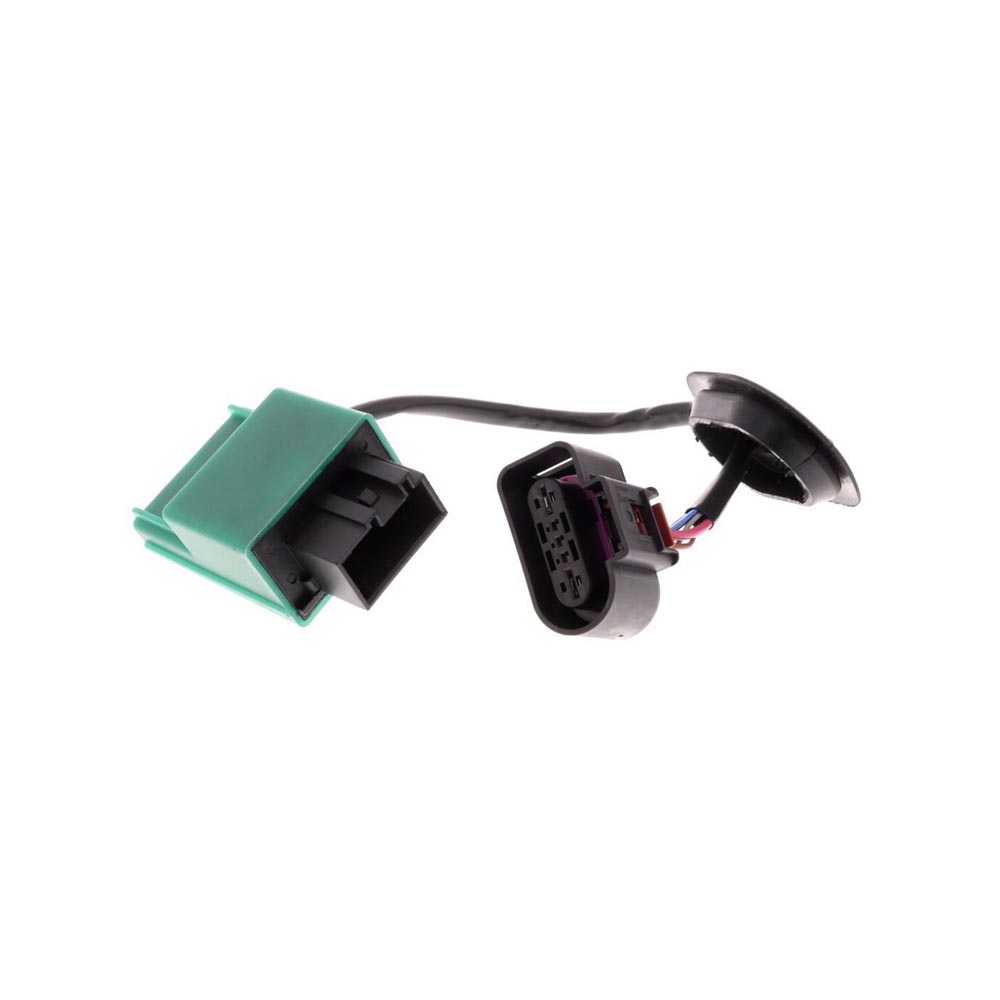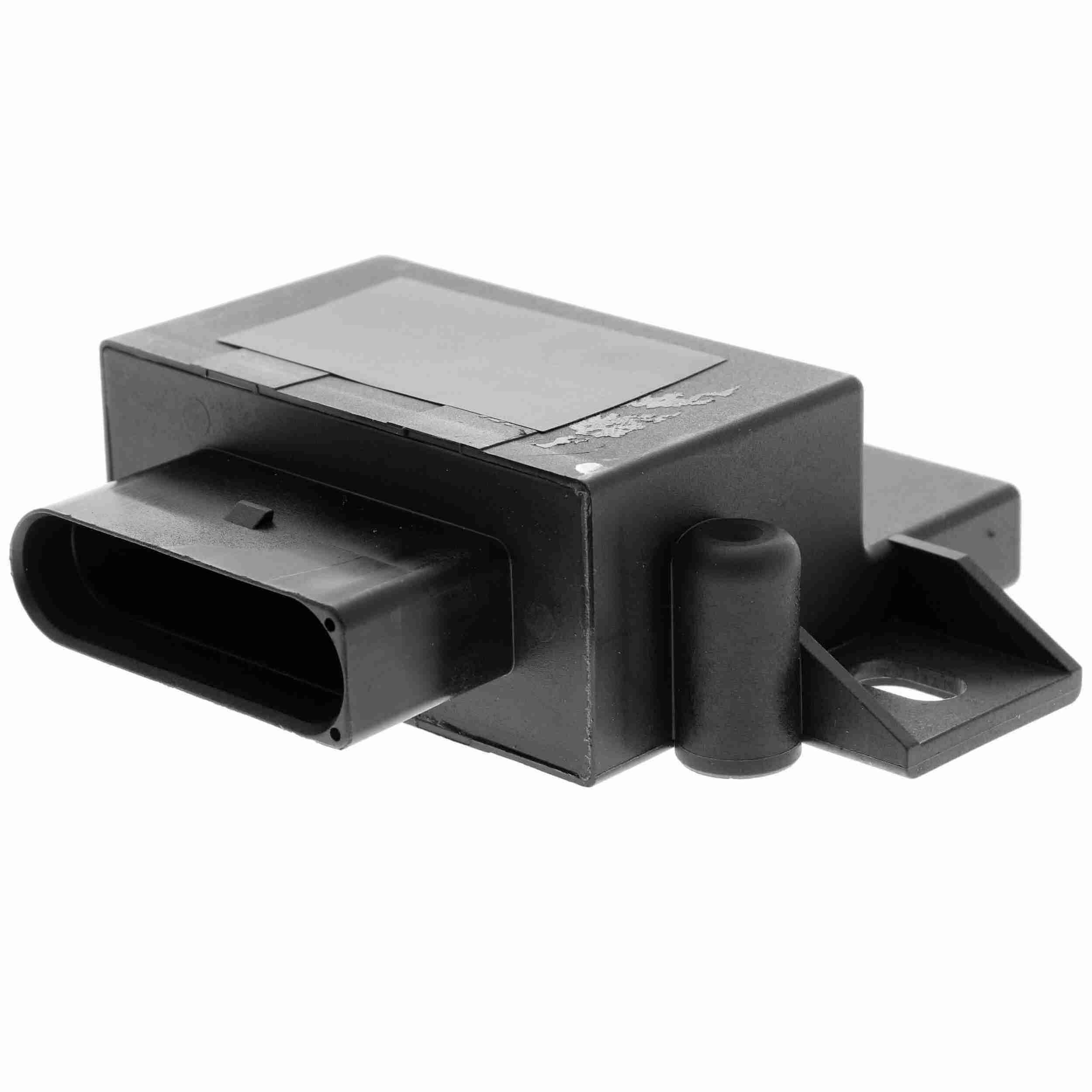Your car contains a wide range of relays, including one for the fuel pump. Like any other relay, the fuel pump relay can eventually fail. When that happens, the fuel pump will no longer work as it should—and your car will begin to exhibit some noticeable symptoms.
What Does a Fuel Pump Relay Do?
A relay is basically an electromagnetic switch that uses low current to control a higher current circuit. Inside the relay, you’ll find a coil and a switching mechanism with a set of contacts. Most automotive relays are normally open, meaning current does not flow between the contacts until the relay is activated.
In a typical automotive fuel pump circuit, a control module activates the relay. When the module deems conditions are correct, it supplies ground to the coil inside the relay, causing current to flow through the coil. The current flowing through the coil creates a magnetic field that pulls the relay’s contacts closed. Current then travels across the contacts to the electric fuel pump, causing the pump to turn on.
Once activated, the electric fuel pump moves fuel from the fuel tank to the fuel injectors at the engine. The injectors supply the fuel needed to make the engine run.

Bad Fuel Pump Relay Symptoms
When the fuel pump relay goes bad, the fuel pump won’t work properly. As a result, you’ll notice one or more of the following symptoms.
Note: Because other problems can present the same symptoms as a bad fuel pump relay, you’ll want to perform a thorough diagnosis of the vehicle before replacing any parts.

Engine Cranks But Doesn’t Start
The most common sign of a bad fuel pump relay is an engine that cranks but doesn’t start. A fuel pump relay will typically fail in the open position, preventing voltage from reaching the fuel pump. As a result, the engine will be starved of fuel and refuse to run.
Fuel Pump Runs Continuously
Although somewhat rare, there are instances where the fuel pump relay can stick closed, causing the fuel pump to run continuously. The problem can happen in circuits that supply power to the fuel pump fuse at all times. In such a scenario, you’ll hear the fuel pump running continuously, even when the key is out of the ignition.
Illuminated Check Engine Light
On some vehicles, the engine computer, which is often referred to as the powertrain control module (PCM) monitors the fuel pump relay and its circuit. If the PCM detects a problem, it turns on the check engine light and stores a corresponding diagnostic trouble code (DTC) in its memory.
Code P0230 “Fuel Pump Primary Circuit” is one such code. Keep in mind, however, that this code is not supported by all makes and models. As such, not all vehicles will turn on the check engine light for a bad fuel pump relay.

Fuel Pump Relay FAQ
How do I test a fuel pump relay?
Automotive relays are often very similar. The easiest way to test a fuel pump relay is to temporarily swap it with another (unimportant) relay from the power distribution box. For example, you might swap the fuel pump relay with the air conditioning compressor relay if the two relays share the same design. If the fuel pump runs with the alternate relay installed, you know the fuel pump relay needs to be replaced.
You can also test almost any automotive relay, including a fuel pump relay, using the process outlined in the video below:
Where is the fuel pump relay located?
The fuel pump relay is typically located in the power distribution box in the engine compartment. Consult your owner’s manual if you need help finding the relay.
Will a bad fuel pump relay throw a code?
As was mentioned, a bad fuel pump relay can cause a code to be set in the PCM, but only on certain cars.
How much does fuel pump relay replacement cost?
Replacing a fuel pump relay is a DIY-friendly repair that you can usually do yourself. A fuel pump relay generally costs less than $20 for just the part itself. Of course, the exact cost will vary depending on a variety of factors, such as the year, make, and model of your vehicle.
Where to Get a New Fuel Pump Relay for Your Vehicle
As mentioned, it’s best to replace the fuel pump relay once you’ve confirmed it’s faulty. Putting off replacement can make the issues it’s causing worse, resulting in expensive repairs. Thankfully, finding a replacement piece is made easier with CarParts.com.
Why visit brick-and-mortar stores when you can shop online and get a high-quality fuel pump relay here at CarParts.com? Use our vehicle selector to view the products that are compatible with your ride, and funnel the catalog results based on your preferences using the search filters. You can also dial our toll-free hotline for further assistance.
All our fuel pump relays passed the highest quality control standards from industry professionals to ensure you’re choosing from only the best parts. Order what you need today, and we’ll deliver your product straight to your doorstep in as fast as two business days.
Don’t wait until you have ignition issues before getting a new fuel pump relay. Check out our website now at CarParts.com.
Shop this Project



Any information provided on this Website is for informational purposes only and is not intended to replace consultation with a professional mechanic. The accuracy and timeliness of the information may change from the time of publication.































